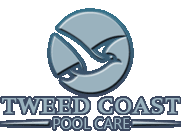Obtaining research paper posted could be a challenge. It really is a lot more challenging when contemplating the possibility of rejection which comes from publishing a paper up to a log that isn’t the right fit. This is where Elsevier’s Journal Finder device will come in.
The Journal Finder device
- Helps inexperienced writers to find the proper journals with their documents
- Helps writers employed in multidisciplinary industries identify feasible journals
- Shows journals that provide open-access choices
Concerning the 2019 relaunch
Journal Finder received an overhaul that is significant July 2019. On the list of updates which were designed to the iteration that is new of Finder are:
- Additional keyword looking choices, with “look ahead” autofill
- Topic area filter via All Science Journal >You will find out more about the updated Journal Finder right right here
For inexperienced writers, this is certainly a particular pain point, ultimately causing rejections, adding months to book and slowing job progress. Almost a 3rd of people to Elsevier’s Authors’ Home are attempting to decide which log they need to submit their paper to.
Meanwhile, editors must dig through numerous out-of-scope documents whenever writers choose journals which are a match that is poor.
Our role would be to help writers through getting them posted in the most useful possible log since fast as you possibly can.
This is where the Journal Finder device is available in. Each month since its launch, Journal Finder has been used by more than 60,000 users.
Just How Journal Finder works
There is Journal Finder right here.
The device produces a summary of Elsevier journals that match the main topic of their abstract. They are able to then purchase the outcome according to their priorities, such as finest CiteScore or shortest time that is editorial. You can easily filter the leads to those journals which have open-access choices.
Since its launch in 2013, JournalFinder was updated to talk about home elevators log metrics that offer users with extra insights into different traits associated with the log – things like effect, reach and speed. Using this given information, writers could make choices in line with the requirements that matter many for them.
You may additionally be thinking about the Journal Insights device, which gives visualizations of log metrics covering five calendar years. With this specific, you’ll investigate the info further, compare styles and derive considerable insight into log performance.
What’s the Elsevier Fingerprinting Motor?
The Elsevier Fingerprinting motor is an application system that mines the writing of medical papers – book abstracts, funding announcements and honors, task summaries, patents, proposals/applications, as well as other sources – to produce an index of weighted terms which describes the written text, referred to as a Fingerprint visualization. The transferability of fingerprinting to many other tools in a typical example of exactly just how Elsevier is benefiting through the expertise of Collexis, a semantic technology computer software developer Elsevier obtained in 2010. Elsevier is utilizing the “fingerprinting” technology for different services and products for Academic and Government Institutional Markets, including SciVal Specialists, an expertise profiling system and research networking device, and SciVal Funding, that will help scientists find financing sources and helps funding agencies find scientists to examine grant applications.
The Journal Finder device utilizes Scopus while the Elsevier Fingerprinting motor concluding sentence examples to find Elsevier journals that many closely match an writer’s directory of key words and/or abstracts. An Elsevier log will likely be suggested if it offers posted articles which may have a high similarity using the article that is new. A listing of prospective journals are going to be designed for authors in addition to device enables filtering according to writer’s favored criteria (such as for instance Impact Factor, open-access options, review time, acceptance price, book times and regularity).
The final selected journal links right to the log’s website while the Elsevier Editorial System (EES) web web web page. The device makes tips through the 2,500+ journals posted by Elsevier.
After being among the first to check the device in 2013, Dr. Adrie J.J. Bos, Co-Editor-in-Chief of Radiation dimensions, penned: “the outcome matched exactly with my very own judgement.”
The way the idea came into being
At Elsevier, we get feedback from tens and thousands of writers every year. By listening to the writers, we could make continuous improvements to our solutions, and design items through the vantage point associated with the individuals who can make use of them. In 2012, we established the writer Cellphone Apps competition, which asked early-career scientists to submit their some ideas for journal-based mobile applications. Your competitors received a response that is overwhelming with 3,775 some ideas submitted.
By way of a pleased coincidence, the winning concept – a “Scope-finder” that could find a very good fitting log for the paper – had been already recognized as a concern for Elsevier and had been integrated in to the growth of the Journal Finder device.
Hearing with this need straight through the client confirmed that individuals had been regarding the track that is right should build this type of tool as quickly as possible.
Your competitors champion, Dr. Peter “TJ” Willemsen an extensive research experts in molecular biology when it comes to Central Veterinary Institute of Wageningen University & analysis Centre within the Netherlands, has tested and endorsed the device, saying:
“Elsevier’s Journal Finder tool is effective for writers in question of which log fits their information. This could easily take place whenever it involves an intermediate industry of research topics or when writers have been in early stages of these research job, attempting to locate just the right journal to write their manuscript.”
Sandra Yee, Dean associated with the University Library System, Wayne State University in Michigan, stated the Journal Finder device can help faculty users and librarians by giving “substantive data and more particular information.”






Leave a Reply
You must be logged in to post a comment.